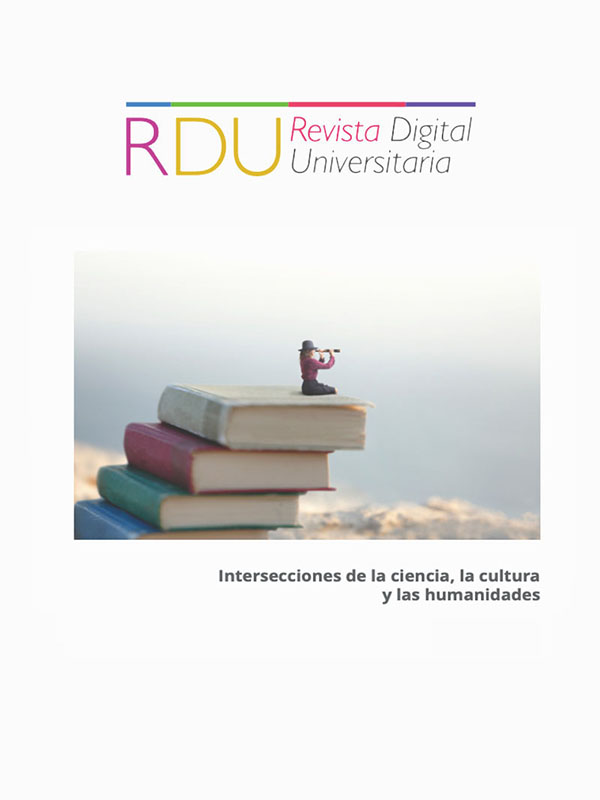Natural perfumes in choosing a partner
DOI:
https://doi.org/10.22201/codeic.16076079e.2019.v20n2.a2Keywords:
chemical communication, sexual selection, pheromones, perfumes, mate choiceAbstract
The theory of sexual selection proposed by Darwin tries to explain the evolution of certain traits that are important for mate choice. Animals communicate through visual, auditory, chemical or tactile signals. Chemical communication is one of the most employed at an intra and interspecific level and consists of using a series of aromas or natural perfumes (pheromones) during couple’s choice. Natural perfumes have diverse chemical structures depending of factors like function, medium in which are employed, and duration and level of specificity in the taxonomic groups that use them. The environment in which the organisms developed is important because it implies variations in pheromone production, which is related to an individual’s health.
This article describes perfumes’ use during mate choice in different animals and how they are employed during the reproduction process.
References
Andersson, M. B. (1994). Sexual selection. s. l.: Princeton University Press.
Cordero Rivera, A. y Santolamazza Carbone, S. (2009). Darwin y la selección sexual después de la cópula. Revista Digital Universitaria, 10(6). URL: http://www.ru.tic.unam.mx/tic/bitstream/handle/123456789/1505/855.pdf?sequence=1&isAllowed=y.
Darwin, C. (1888). The descent of man and selection in relation to sex (vol. 1). Londres: Murray.
Delgadillo, D. C. (2005). Feromonas. Lo que el viento se llevó. Revista Casa del Tiempo, 3. URL: www.uam.mx/difusion/revista/junio2005/02.pdf.
Grammer, K., Fink, B., Møller, A. P. y Thornhill, R. (2003). Darwinian aesthetics: sexual selection and the biology of beauty. Biological Reviews, 78(3): 385-407. DOI: https://doi.org/10.1017/S1464793102006085.
Guevara Guzmán, R. (2004) ¿Cuál es el papel de las feromonas en la conducta sexual humana? Revista de la Facultad de Medicina, 47(1): 16-20 URL: http://www.medigraphic.com/pdfs/facmed/un-2004/un041e.pdf.
Gutiérrez-García, A. G. y Contreras, C. M. (2002). Algunos aspectos etológicos de la comunicación química en ratas y ratones de laboratorio. Revista Biomédica, 13(3): 189-209. URL: http://www.medigraphic.com/pdfs/revbio/bio-2002/bio023f.pdf.
Harari, A. R., Zahavi, T. y Thiéry, D. (2011). Fitness cost of pheromone production in signaling female moths. Evolution, 65(6): 1572-1582. DOI: https://doi.org/%2010.1111/j.1558-5646.2011.01252.x.
Hernández-López, L. E. y Cerda-Molina, A. L. (2012). La selección sexual en los humanos. Salud mental, 35(5): 405-410. URL: http://www.scielo.org.mx/scielo.php?script=sci_arttext&pid=S0185-33252012000500007.
Juárez Vea, J. (1987). Feromonas: olor y comunicación. Elementos. 12(2): 36-46. URL: http://www.elementos.buap.mx/num12/pdf/36.pdf.
López, P. (2002). Comunicación intraespecífica en reptiles mediante señales químicas: la utilización de señales fiables para decidir comportamientos. Revista Española de Herpetología: 49-59. Revisado diciembre 2017. URL: www.herpetologica.org/revespherp/volespecial_2002/049-059%20lopez.pdf.
Paredes Guerrero, R., Fernández, A. A., Juárez, C., Tapia, S., Figueroa, Á., Criou, X. y Encinas, A. (2016). Los olores del amor. URL: http://www.unamiradaalaciencia.unam.mx/stc_metro/consulta_stcm_pdf.cfm?vArchivoStcm=123.
Peralta Falcón, R. (2018) Hidrocarburos cuticulares que intervienen en el reconocimiento intraespecífico de toxotrypana curvicauda (diptera: tephritidae). URL: https://tesis.ipn.mx/handle/123456789/25711.
Pölkki, M., Krams, I., Kangassalo, K. y Rantala, M. J. (2012). Inbreeding affects sexual signalling in males but not females of Tenebrio molitor. Biology letters, 8: 423–425. DOI: https://doi.org/10.1098/rsbl.2011.1135.
Rippe, C. A. (2009). El ciclo estral. En Dairy Cattle Reproduction Conference (pp. 111-116).
Roberts, E. K., Lu, A., Bergman, T. J. y Beehner, J. C. (2012). A Bruce effect in wild geladas. Science, 335(6073), 1222-1225. DOI: https://doi.org/10.1126/science.1213600.
Robles Caycho, J. (1994). Comunicación química. Revista de Química, VIII (2): 163-175. URL: http://revistas.pucp.edu.pe/index.php/quimica/article/viewFile/5534/5530.
Rollmann, S. M., Houck, L. D., y Feldhoff, R. C. (2000). Population variation in salamander courtship pheromones. Journal of Chemical Ecology, 26(12), 2713-2724. URL: http://people.oregonstate.edu/~houckl/pdfs/Rollmann%20et%20al%202000%20JChemEcol.pdf.
Wolff, J. O. (2003). Laboratory studies with rodents: facts or artifacts? AIBS Bulletin, 53(4), 421-427.
Published
Issue
Section
License
Copyright (c) 2020 Revista Digital Universitaria

This work is licensed under a Creative Commons Attribution-NonCommercial-ShareAlike 4.0 International License.

Revista Digital Universitaria es editada por la Universidad Nacional Autónoma de México se distribuye bajo una Licencia Creative Commons Atribución-NoComercial 4.0 Internacional. Basada en una obra en http://revista.unam.mx/.










